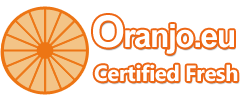0
How does multi pad drilling reduce environmental impact? www.24chemicalresearch.comban site
Global Multi Pad Drilling Market continues to demonstrate robust expansion, with projections estimating its valuation to reach USD 6.15 billion by 2025 at a steady CAGR of 6.7%. This growth trajectory is expected to push market value to approximately USD 9.82 billion by 2032, driven by efficiency demands in unconventional resource extraction and technological innovations driving productivity improvements of 20-30% compared to conventional methods.
Multi pad drilling, the advanced technique of drilling multiple wells from a single surface location, has revolutionized hydrocarbon extraction through superior operational efficiency and reduced environmental impact. Major operators are particularly drawn to this technology because it enables simultaneous extraction from multiple reservoirs while significantly lowering operational costs - a critical factor in today's competitive energy markets.
Download FREE Sample Report: https://www.24chemicalresearch.com/download-sample/123949/global-multi-pad-drilling-market
Market Overview & Regional Analysis
North America currently dominates the multi pad drilling landscape, accounting for 35% of global market value, with its shale plays in the Permian and Bakken basins serving as key adoption drivers. Operators in these regions report drilling cost reductions of 15-25% through multi pad configurations, while simultaneously decreasing surface disturbance by 60-70% compared to traditional methods.
The Asia-Pacific region emerges as the fastest growing market, projected to expand at 7.8% CAGR through 2032, with China's aggressive development of unconventional resources in the Sichuan Basin leading this growth. Meanwhile, the Middle East presents an interesting dichotomy - while blessed with conventional reserves, operators are increasingly adopting multi pad techniques to enhance recovery from aging fields like Saudi Arabia's Ghawar.
Key Market Drivers and Opportunities
The market's expansion is primarily fueled by three critical factors: the sustained shale revolution requiring efficient extraction methods, technological breakthroughs in directional drilling equipment, and the pressing need to reduce environmental impact of hydrocarbon operations. Recent advances in automated rig systems and digital twin technology have reduced non-productive drilling time by 25-30%, while simultaneously improving well placement accuracy within 3-5 meters of target zones.
Significant opportunities exist in developing hybrid energy solutions that combine multi pad drilling with renewable power generation - pilot projects demonstrate 30% reductions in carbon emissions. Furthermore, the application of these techniques in developing geothermal resources could unlock a potential $15-20 billion market by 2030, representing a strategic diversification path forward-thinking operators are actively exploring.
Challenges & Restraints
Despite the obvious benefits, the industry faces considerable headwinds. High initial capital requirements of $15-20 million per pad create barriers for smaller operators, while workforce shortages plague even established players - recent data indicates a 25-30% gap in available skilled labor versus operational requirements.
Environmental regulations continue evolving, with permitting timelines extending by 6-12 months in key markets due to increased scrutiny of land use and water management practices. Furthermore, supply chain disruptions have pushed lead times for critical components to 9-12 months in some cases, adding 5-8% to project costs annually.
Market Segmentation by Type
Comments (0)
You need to be logged in to write comments!
This story has no comments.
